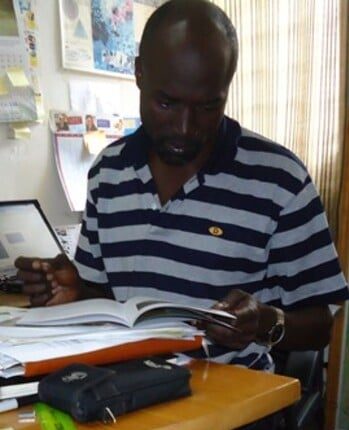
Increasing taxonomic skills to allow the identification of small rodents from Kenya (2004)
&
Taxonomic determination of invasive alien rodent species implicated in food security and public health cases in urban and rural Kenya (2012)
Internship details
2004 and 2012
Royal Belgian Institute of Natural Sciences and University of Antwerp – Biology Department
Dr. Verheyen Erik
Animalia – Chordata – Mammalia – Rodentia – Muridae
2004 internship:
The National Museums of Kenya (NMK) is a reference center for today’s and past biological heritage. The challenge of NMK as a natural history museum is twofold: taxonomic capacity and management of threatened biodiversity, particularly of small species.
The Mammalogy Department of NMK is a regular resort for both domestic and foreign scientists looking for reference material. Over half of the total mammal specimens are rodents, bats and shrews. Unfortunately, these are often poorly labelled, curated and identified due to a lack of taxonomically skilled personnel.
This project therefore involves the taxonomic training of one staff member of the NMK, Mr. Agwanda, who will in turn train colleagues back home to further expand the know-how. The training should include skull and biometric (craniodental), molecular and ultrasound analysis. The ultimate goal is to enable the Mammalogy Department to provide quality services as a resource/scientific reference center.
2012 internship:
Invasive alien species in Africa have huge economic impacts, which is particularly the case for Nile perch fish and Water hyacinth. However, effects of these two and those of arthropod pests have somewhat “overshadowed” the equally enormous effects of rodents on public health and food security.
Recent biomedical surveys have revealed several serious zoonotic agents from invasive alien rodents, which are not clearly identified. The rodents include Mus spp. and Rattus spp. introduced from Europe and Asia. This project intends to provide accurate taxonomic identity of these two genera to support ongoing biomedical and food security studies in Kenya. Tissues from rodents will be brought to RBINS for taxonomic analysis; molecular results will complement morphometric ones. In parallel, samples of the same rodents are being screened for pathogens at Antwerp University and the Centers for Disease Control and Prevention (CDC) in the USA.
Results will advance knowledge of taxonomy and epidemiology of zoonotics, and will support the development of management plans.